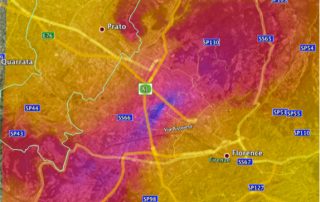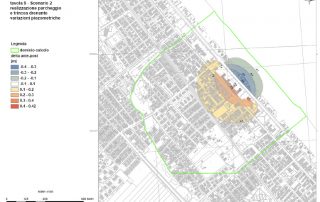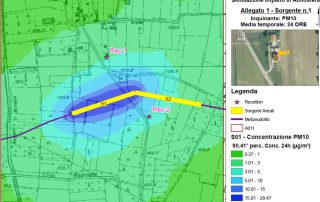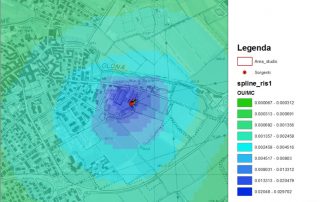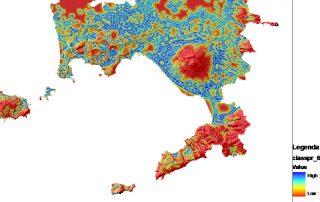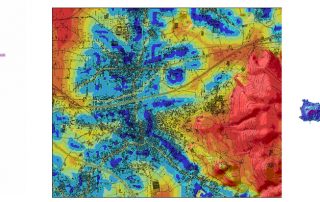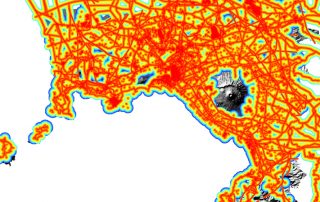GECOsistema is specialized in environmental impact studies (EIS) for several categories of works including energy plants, waste incinerators, wastewater treatment plants, landfills, industrial activities, urban transformations, commercial malls and transport infrastructures.
GECOsistema delivers specialized contributions on all aspects of an EIS, as well as full, turn-key services on all aspects of an EIA procedure.
A specialization in environmental modeling enables us to tackle virtually all aspects of a project that require use of quantitative simulation models (air, water and soil pollution, hydrological impacts, thermal impacts of water discharges, vehicular traffic, noise, electromagnetic fields, soil modification etc.).Within EIS, we provide services related to visual/landscape impacts, thanks to long term collaboration with specialists in landscape architecture.
GECOsistema deals with cumulative impacts through GIS and multicriteria analysis methods, also empowering effective communication of the results of an EIS to the public.
Experts at GECOsistema have conducted SEA for urban plans, province masterplans and sectoral plans and programmes in sectors such as tourism, transport, natural hazards, quarrying activities.
GECOsistema grounds its assessments on broad use of quantitative simulation/modeling of land use, traffic and population scenarios, yielding indicators and indexes that can be considered in multicriteria analysis and SWOT analysis, and in the monitoring of effects from plans and programmes.
The purpose of the assessment is to ensure that decision makers consider the environmental impacts when deciding whether or not to proceed with a project. The International Association for Impact Assessment (IAIA) defines an environmental impact assessment as “the process of identifying, predicting, evaluating and mitigating the biophysical, social, and other relevant effects of development proposals prior to major decisions being taken and commitments made.”[1]
EIAs are unique in that they do not require adherence to a predetermined environmental outcome, but rather they require decision makers to account for environmental values in their decisions and to justify those decisions in light of detailed environmental studies and public comments on the potential environmental impacts.
Strategic environmental assessment (SEA) is a systematic decision support process, aiming to ensure that environmental and possibly other sustainability aspects are considered effectively in policy, plan and programme making. In this context, following Fischer (2007)[1] SEA may be seen as:
- a structured, rigorous, participative, open and transparent environmental impact assessment (EIA) based process, applied particularly to plans and programmes, prepared by public planning authorities and at times private bodies,
- a participative, open and transparent,possibly non-EIA-based process, applied in a more flexible manner to policies, prepared by public planning authorities and at times private bodies, or
- a flexible non-EIA based process,applied to legislative proposals and other policies, plans and programmes in political/cabinet decision-making.
Effective SEA works within a structured and tiered decision framework,aiming to support more effective and efficient decision-making for sustainable development and improved governance by providing for a substantive focus regarding questions, issues and alternatives to be considered in policy, plan and programme(PPP) making.
SEA is an evidence-based instrument, aiming to add scientific rigour to PPP making, by using suitable assessment methods and techniques.
From 2005-2007, the effect of the directive was assessed. In 2010, a revised wording was published, integrated with 6 other European directives regulating large industrial sites, into the Industrial Emissions Directive, short IED.

